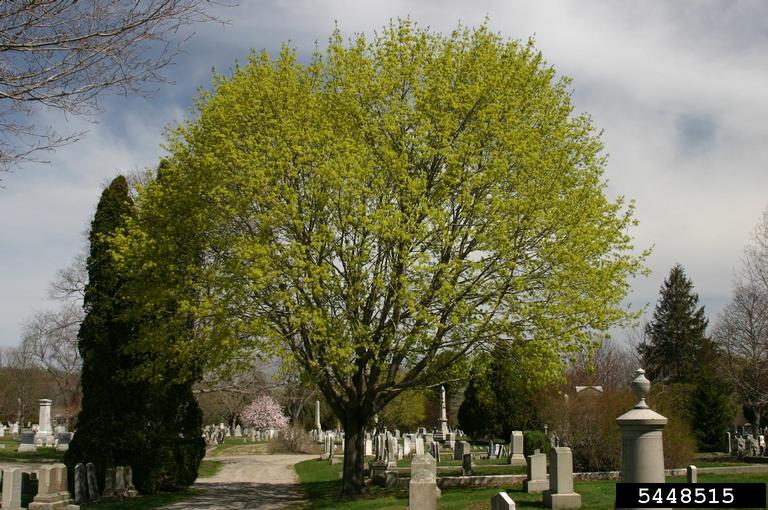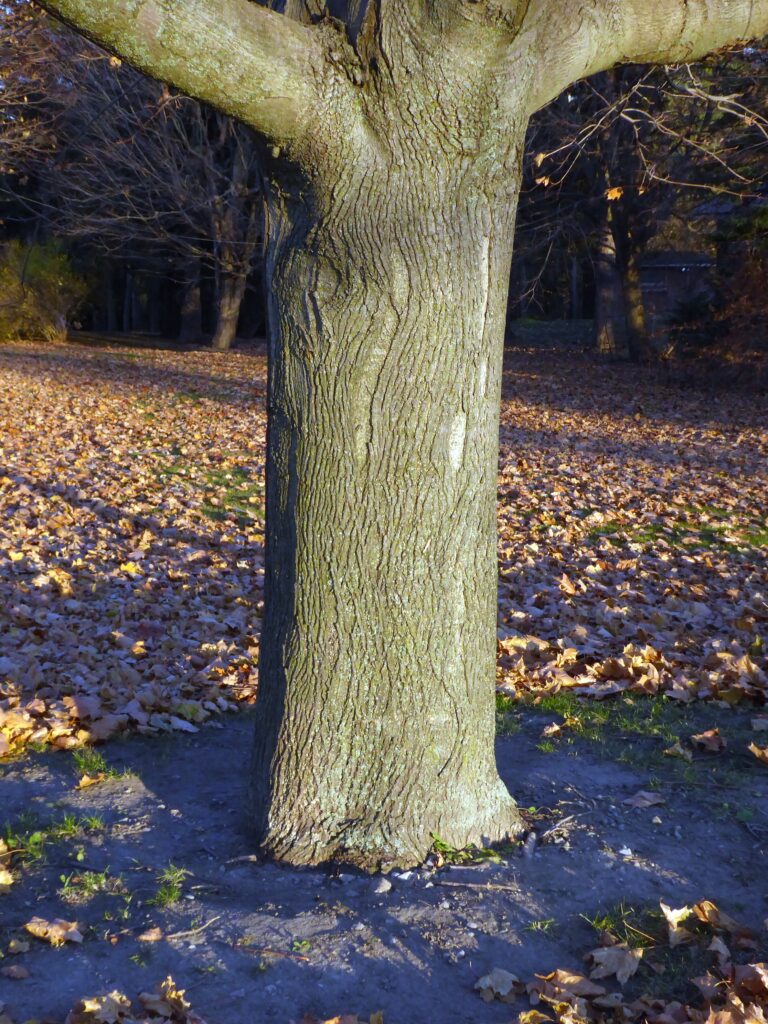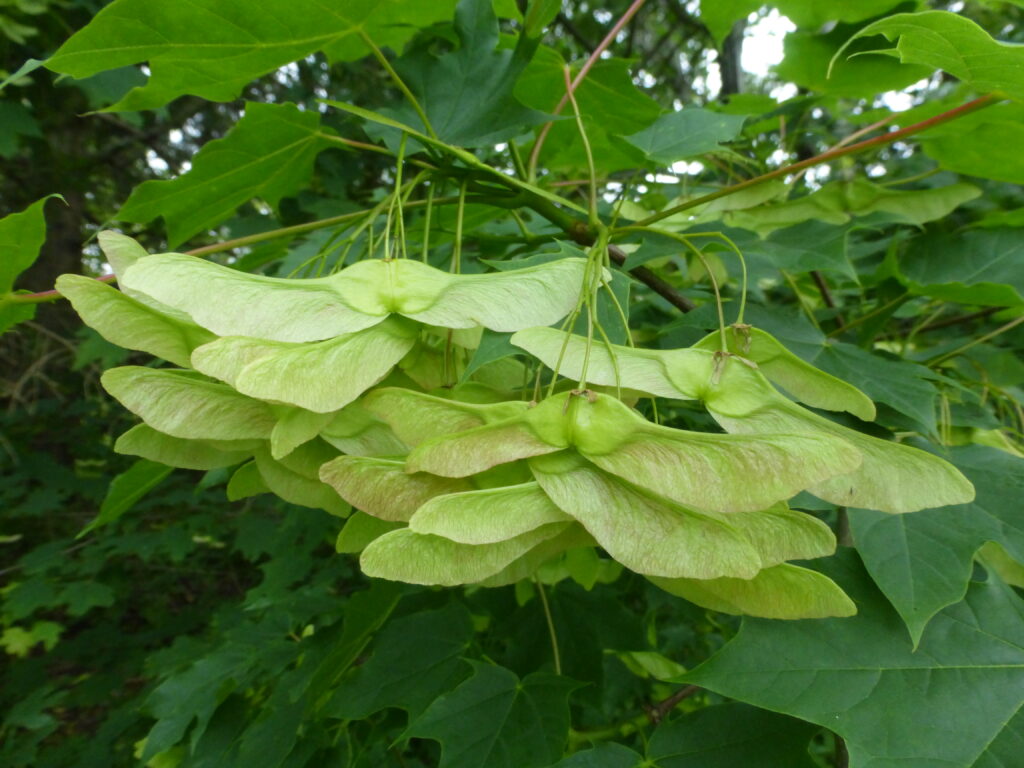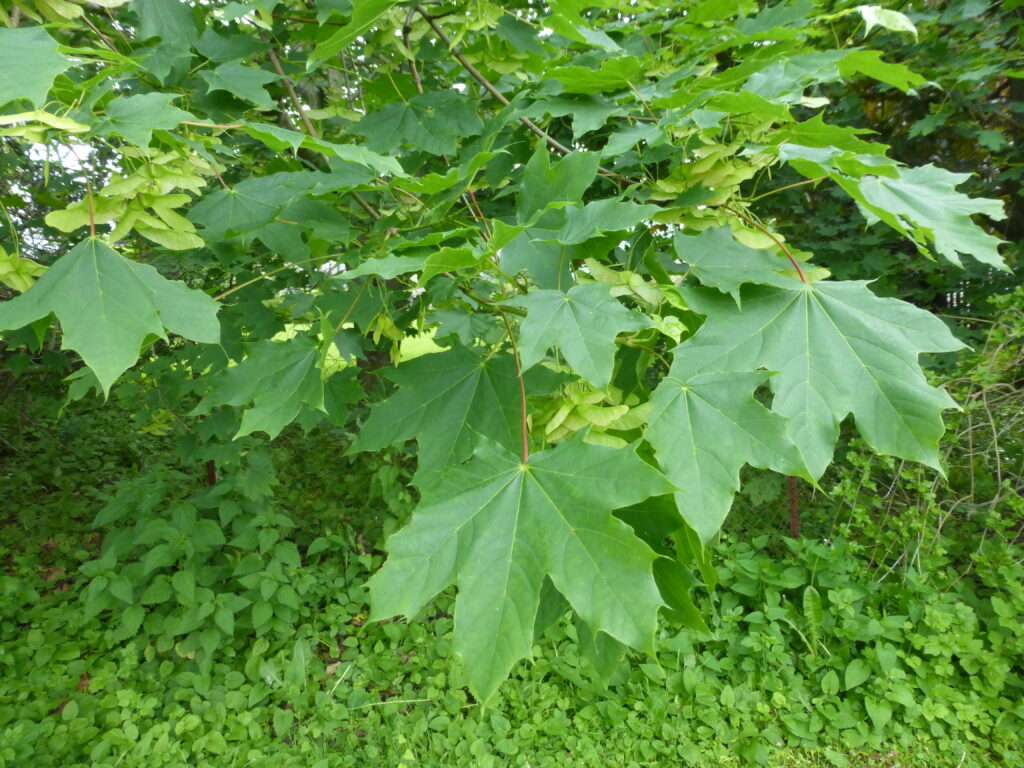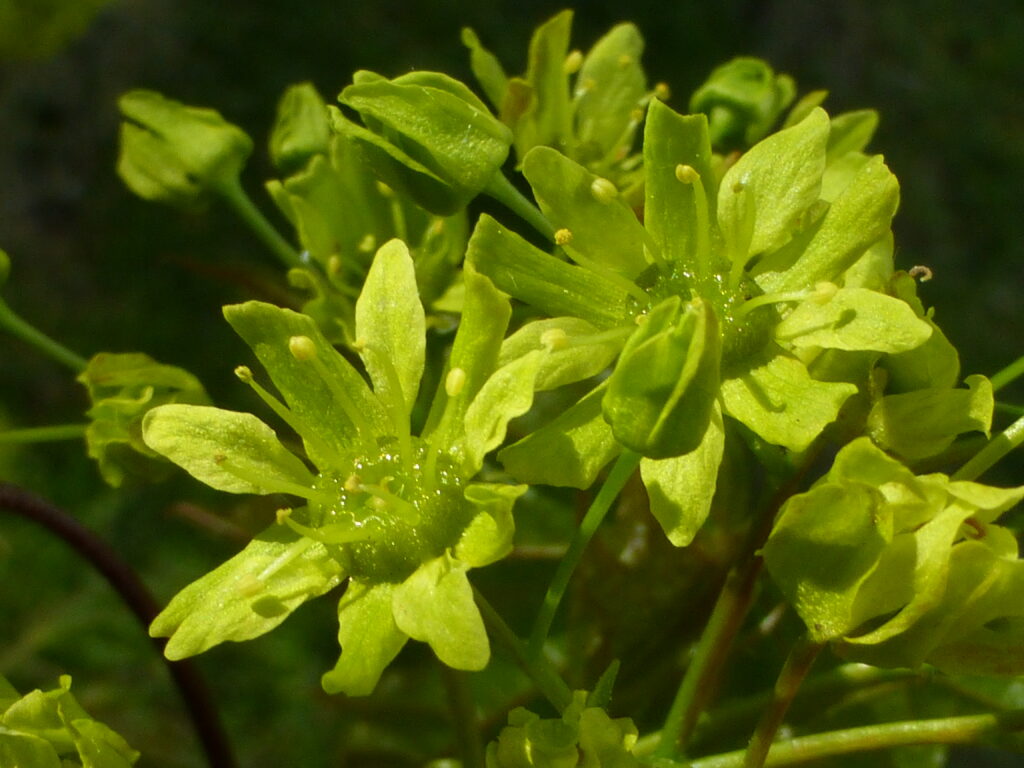Norway maple or érable de norvège is a shade-tolerant deciduous tree in the soapberry (Sapindaceae) family, formerly in the Aceraceae family. Native to Europe and western Asia, it was first introduced to the United States for cultivation as an ornamental tree in 1756. In Canada, Norway maple was planted widely in cities and towns after World War II as a reliable and rapidly growing replacement for white elms (Ulmus americana) when they were largely eliminated as an urban street tree by Dutch elm disease. It has many competitive advantages over native maple and other tree species, including shade-tolerance, prolific seed production, and ability to establish in a variety of soil types.
For more information on Norway Maple, download our Best Management Practices, available using the link below:
